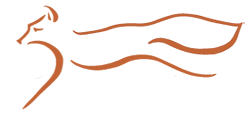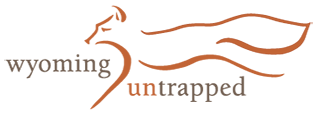To put things bluntly, it’s going to be a really tough season for the fur market, and low prices will be the norm for most species. I hope I’m proven wrong, I really do. But in more than a decade of following the market and reporting on prices, I’ve never seen anything remotely like this. A seemingly endless global pandemic, supply chain disruptions and economic uncertainty have dealt a pretty heavy blow to an already low market. When it will recover is anyone’s guess.
First let’s talk macro factors, then we’ll look into individual species.
The modern fur market is global. Unlike the historic market, where a great deal of domestic production was consumed in North America, today’s market relies on buyers in China, Greece, Italy, Russia and Korea. Unlike in the U.S., fur is fashionable in these places, and the economic well being of their consumers is critical in driving the market. China is the largest buyer. Since the pandemic began, China has pretty much been in full lockdown mode. Their disease prevention strategy has been effective, but it also ground the economy to a halt. People can’t get out to shops to buy fur coats and other garments. There’s also little reason to spend on fashionable clothing when folks aren’t going out and socializing like they once did. Although things began to recover, recent resurgence of the virus has required China to re-institute many of the lockdowns, keeping potential consumers at home.
Fur Harvesters Auction, Inc., the one remaining fur auction house in North America, had to resort to online-only fur sales all last year. Although they were able to move some fur, the results weren’t great. Whether that was due to the inability of buyers to physically inspect goods they were bidding on, or more a reflection of the lack of demand in the market, is hard to determine. Perhaps it was a little bit of both. Auction prices were disappointing throughout the year, although a good amount of inventory was finally cleared out, leaving some potential for increasing prices if demand recovers.
Another wrinkle brought on by the virus is the importation of raw skins into certain countries. China has banned import of all raw skins, meaning any fur sold must be sent somewhere to be dressed (tanned) and then imported into China. This extra step in the process adds cost, making it more difficult to sell fur at reasonable prices.
Groenewold Fur & Wool Company, the largest private buyer of wild fur in the U.S., has close connections with the fur market in China and monitors day to day sales of fur items in numerous Chinese shops. Groenewold regularly runs fur buying routes across the midwestern U.S. throughout the trapping season. For the first time in recent memory, they announced in early November 2021 that they would discontinue ALL fur buying routes until further notice, citing “difficult and uncertain market conditions”. In short, fur isn’t selling in China right now. At all.
You can’t talk wild fur prices without touching on ranch fur production (primarily mink and fox), since ranch fur accounts for the vast majority of all fur consumed in the world. The ranch mink market has changed considerably, with several years of depressed prices causing many farms to go out of business, thus reducing supply. The discovery of COVID-19 strains in several mink farms resulted in the forced culling and disposal of millions of pelts. This would all seem to be positive for wild fur, with a smaller number of mink on the market. The problem, though, is the millions of mink pelts that are sitting in storage waiting to be sold just haven’t cleared out yet. This oversupply will continue to weigh on prices until demand for fur recovers.
Oil prices have almost doubled recently, providing an economic boost to countries like Russia, whose citizens do consume a lot of fur. This hasn’t helped China, though, as they import most of their oil, and increased cost just drives up the cost of production in factories, eventually weighing down on economic growth. Oil prices have often been a good barometer for fur prices, but it’s unclear whether they’ll matter much in today’s fur market.
Fashion trends continue to drag on the fur market recently as well. Although fashion trends come and go and can’t be predicted with much reliability, the trend seems to be obvious. Despite all of the obvious benefits of fur – its incredible warmth and durability, sustainable management, environmental friendliness and biodegradability, and the necessity to harvest animals to manage healthy populations, the animal rights movement continues to influence the industry and fashion. Several fashion lines have announced they’ll discontinue using fur. Canada Goose – the largest buyer of coyote pelts and trendsetter in fur lined parka fashion, recently announced they’re going ‘fur free’. In addition, several cities in the U.S. have passed rules banning the sale of fur products, and some states are contemplating fur bans as well. It’s a crazy world out there. Just when we should be celebrating the benefits of wild fur, society seems to be running away from it.
Okay, enough of that. Given those overall trends, let’s talk about what to expect for prices for individual species.
Coyote – One of the sole bright spots in the market is probably in the process of fading. There are mixed opinions on the future of the coyote market, with some saying strong demand will continue, while others believe the fallout of Canada Goose leaving the market will have strong ripple effects. I’m personally of the opinion that prices will fade quickly without a major fashion buyer in the market. The copycats and knockoff coats are only good sellers when there’s a top of the line, fashionable coat to imitate. So in my mind, we may see some decent prices early on, but I wouldn’t expect it to last. Heavy western coyotes are the ones still in demand right now, and averages from $70-100 are possible this year, but I’m skeptical. I would sell early if I had a reasonable offer.
The hot western coyote market has done a lot to boost eastern coyote prices in recent years. When the best quality pelts sold out, buyers looked to the eastern and flatter skins to fill orders. That’s over. While Eastern coyotes were selling for $25-45 lately, I would expect those prices to be cut in half this year. Southern and lower quality coyote pelts may get $10-15.
Muskrat pelts have seen decent demand lately and are one of the only fur items that have actually increased in price over the past years. It’s unclear if it’ll last, but the low harvest of muskrat and a boost in demand is helping prices. They should average $3.50-4.00 conservatively, with potential averages to $5.00.
The market for raccoon pelts is terrible. A very abundant item with low demand and high processing costs has created a situation where it’s going to be difficult if not impossible to sell many raccoon skins at any price. The best quality pelts – the largest sizes that are fully prime and undamaged – will have demand and may sell for $10-15, but the rest may not sell at all, or if they do, average in the low single digits. There is a ton of supply backlog in this market. It’ll be a while before we see improvement.
Beaver pelts are used in two very different markets. On the high end, plucked, sheared and dyed beaver garments command very high value, but are costly to produce and don’t find too many buyers. The best beaver pelts go to these markets as well as domestic niche markets for hats, mitts and blankets, and they sell for decent prices. On the low end, beaver pelts are ground and crushed into felt and used to make cowboy hats. Pelt quality isn’t a concern for the low end markets, any beaver pelt can be used, and they don’t pay well. Sadly, the high end market has shrunk enough that many of the better beavers have been selling for ‘hatter’ prices, and it appears that hatter demand is more easy to fill recently. If you have a top quality beaver pelt it’s possible to get $25 or more. But most beaver collections will probably average around $10 this year. Some will struggle to get this.
Beaver castor has commanded phenomenal prices recently – averaging around $100/lb, and with the lower beaver harvest resulting from poor fur markets, combined with steady demand, there’s no indication that this will change. Take advantage of this market while you can!
Despite their high quality and apparent utility, otter pelts haven’t commanded much in the market for years. They’ll probably continue to sell for $15-25.
Marten and Fisher are unique items with limited supply, and both cleared pretty well in the latest auction. Fur Harvesters is expecting increased demand and prices this season. That could mean $30 for Lower 48 marten and $60+ for Alaskan types. Marten prices vary substantially based on size, color and primeness. Fisher could average $30.
I see the bobcat market as similar to coyotes – the top end will do well, with a steep drop in price for the rest. The best western cats with top grade colors and spots should get at least $100, with some collections averaging $300-400. The rest will probably get $30-60.
Nobody seems interested in Red Fox or Greys. They’ll probably fetch around $10 on average.
Skunks will sell well – there always seems to be a specialty market for them – at about $5.
I hate to be so pessimistic on the fur market, and it’s been a tough couple of years reporting on these prices. So let’s look on the bright side. The low fur market may present some opportunities. I think we’re in the midst of some sort of shift in market structure, and the future fur market may look a lot different than it does today. It’ll require more effort on behalf of fur harvesters to produce products and market our goods directly to consumers. I don’t know what that’ll look like exactly, but these low price periods may be a good time to get a bunch of that fur tanned and try making and marketing your own products. Who knows what kind of opportunities you could create?
Photo by @savannahrosewildlife. Thank you!


